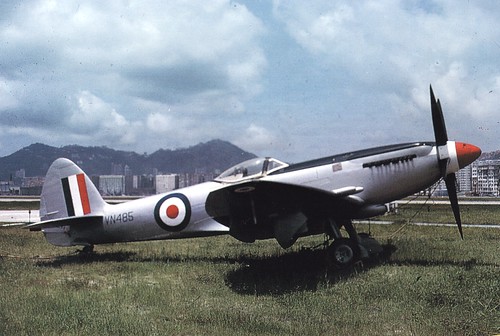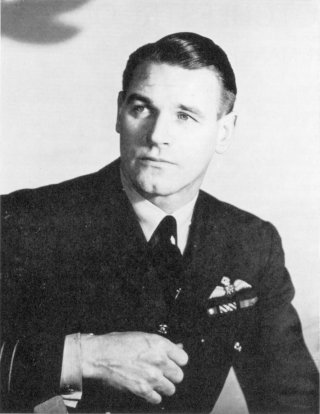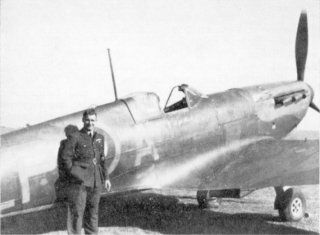Xenophon
Gone and forgotten
Britain's premier fighter
The Spitfire's role in the winning of the Battle of Britain, put it among the most admired fighters ever built and gave it an heroic romantic image never bestowed on any other aircraft.
Its designer R.J. Mitchell (1895-1937) was appalled when he realized how sharply the burgeoning military might of Nazi Germany contrasted with laggardly British re-armament. Mitchell determined to develop, before it was too late, a fighter that could match warplanes like the Bf 109 fighter and the Ju 88 'fast' bomber.
The Spitfire was built around the Rolls Royce PV 12 engine and the Air Ministry requirement for a fighter with eight machine guns. The graceful, highly maneuverable prototype with its light alloy fuselage and a 990 hp engine first flew on 5th March 1936 and reached a speed of 349.5 mph. Within three months, its manufacturers, Supermarine, had received a contract for 310 Spitfires with 200 more ordered for 1937.
When World War II began, nine British squadrons were equipped with Spitfire Is. This single-seater interceptor fighter was powered by a 1,030 hp Rolls Royce Merlin III twelve cylinder liquid cooled engine and armed with eight .303 inch Browning machine guns. With a maximum speed of 365 mph at 19,000 ft., Spitfire IAs had a range of nearly 600 miles and could climb at the rate of 2,500 feet per minute. These aircraft, with their 36 ft. 10 ins. wingspan, and length of nearly 30 ft., were the main breed of Spitfire contesting the Battle of Britain, although the Spitfire II, with its 1,175 hp Rolls Royce Merlin XII engine was present in small numbers.
The Spitfire went through 21 more variants before the final, 20,334th, was produced in 1947. During World War II, Spitfires served in the Mediterranean, North Africa, Australia, Russia and the Far East. The Spitfire was held in respect and fear by pilots of the German Luftwaffe. Legend has it that when victory in the Battle of Britain was slipping from the Germans' grasp, Luftwaffe chief Hermann Goering asked his pilots what they most wanted to reverse the situation. The answer was, reputedly:
'A squadron of Spitfires'.
The Spitfire's role in the winning of the Battle of Britain, put it among the most admired fighters ever built and gave it an heroic romantic image never bestowed on any other aircraft.
Its designer R.J. Mitchell (1895-1937) was appalled when he realized how sharply the burgeoning military might of Nazi Germany contrasted with laggardly British re-armament. Mitchell determined to develop, before it was too late, a fighter that could match warplanes like the Bf 109 fighter and the Ju 88 'fast' bomber.
The Spitfire was built around the Rolls Royce PV 12 engine and the Air Ministry requirement for a fighter with eight machine guns. The graceful, highly maneuverable prototype with its light alloy fuselage and a 990 hp engine first flew on 5th March 1936 and reached a speed of 349.5 mph. Within three months, its manufacturers, Supermarine, had received a contract for 310 Spitfires with 200 more ordered for 1937.
When World War II began, nine British squadrons were equipped with Spitfire Is. This single-seater interceptor fighter was powered by a 1,030 hp Rolls Royce Merlin III twelve cylinder liquid cooled engine and armed with eight .303 inch Browning machine guns. With a maximum speed of 365 mph at 19,000 ft., Spitfire IAs had a range of nearly 600 miles and could climb at the rate of 2,500 feet per minute. These aircraft, with their 36 ft. 10 ins. wingspan, and length of nearly 30 ft., were the main breed of Spitfire contesting the Battle of Britain, although the Spitfire II, with its 1,175 hp Rolls Royce Merlin XII engine was present in small numbers.
The Spitfire went through 21 more variants before the final, 20,334th, was produced in 1947. During World War II, Spitfires served in the Mediterranean, North Africa, Australia, Russia and the Far East. The Spitfire was held in respect and fear by pilots of the German Luftwaffe. Legend has it that when victory in the Battle of Britain was slipping from the Germans' grasp, Luftwaffe chief Hermann Goering asked his pilots what they most wanted to reverse the situation. The answer was, reputedly:
'A squadron of Spitfires'.












